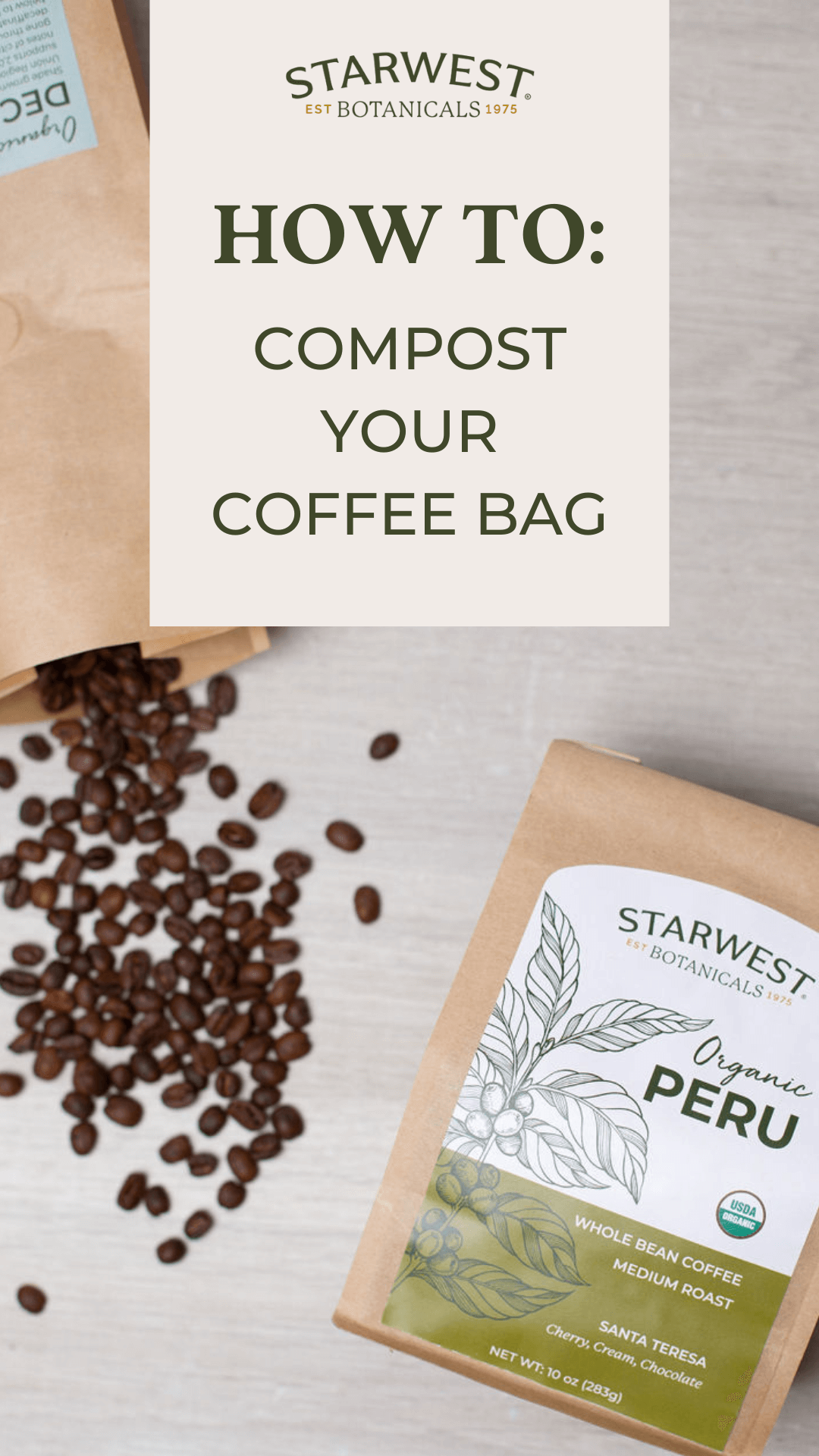How To Compost Your Starwest Botanicals Organic Coffee Bag | Starwest Botanicals
Posted by Starwest Botanicals Content Team on 02-26-2023
Composting Your Starwest Botanicals Organic Coffee Bag
We are excited to partner with Pachamama Coffee to offer certified organic coffee beans to our customers. As a company, sustainability is important to us and something we are actively moving towards. Therefore, we knew we needed to find a sustainable option when it came to packaging our new coffee line. We are proud to say that our coffee will come in kraft Biotrē 1.0 coffee bags.
What is Biotrē 1.0 and why is it better?
Biotrē 1.0 coffee bags are made up of 60% compostable and 60% plant-based renewable materials. The outer layer consists of natural kraft paper and cellulose made from wood pulp and has been shown to break down into healthy home compost in about 12 weeks. The interior layer is made with an additive that makes it “oxo-degrade,” which allows it to break down over about 5-10 years vs. the estimated 1,000 years needed for normal plastic to break down.
“Home Compostable”: What does this mean and how is it different from municipal/industrial composting?
Industrial compostable is when municipal districts pick up green waste once a week along with trash and recycling. Green waste such as lawn clippings, leaves, food waste, etc. is taken to be processed into compost.
Home compost is when you compost at home, rather than relying on city pick up. Instead of throwing it into the waste bin for compost you can do this process in your own backyard. In a healthy compost pile, the Biotrē 1.0 bag will biodegrade in around 12 weeks.
How to compost the Biotrē 1.0 bag at home:
- Remove the degassing valve and tin tie from the bag. The degassing valve and tin tie are unfortunately not recyclable, but we suggest reusing the tin tie!
- Now that the bag is free from the non-biodegradable items add it to your compost pile.
TIP: This bag is considered “browns” which includes dry materials like paper, sawdust, cardboard, and leaves. A healthy compost bin should have a ratio of “greens” (food scraps, coffee grounds, and lawn clippings) and “browns.” We recommend a ratio of 2:1, greens to browns. Your local municipality should have backyard composting instructions if you live in a special climate.
- You should regularly turn your compost to introduce fresh air to the organisms breaking down the organic matter. Watch as the bag and label re-enter the nitrogen cycle to be used up in your garden!
- After the bag has been composted, you will see the bioplastic liner and the bag labels. Simply pull the remaining bag contents from your compost pile and dispose of it in the trash.
If you don’t have a yard or access to a home compost pile, get to know your local community gardens, urban farms, neighbors and even certain non-profits committed to diverting compostable materials away from the landfill.
Click here to learn more about Biotre compostable packaging.



